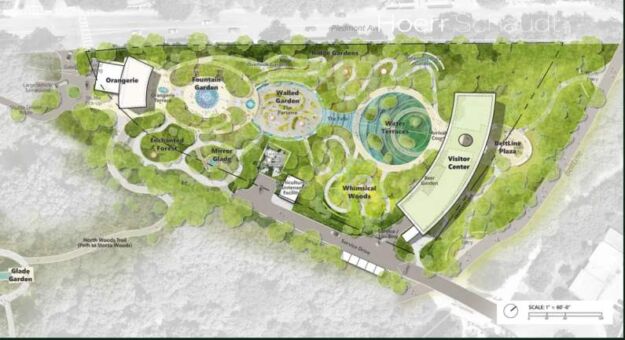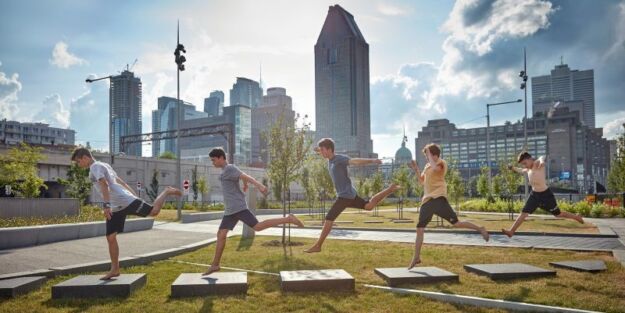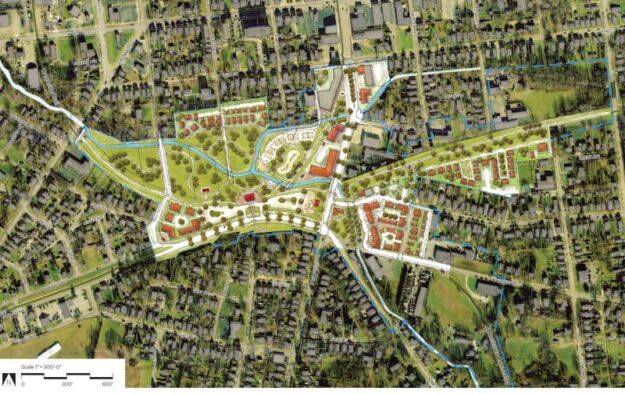Masdar City by Foster + Partners
The world is facing urban sustainability phenomenons (or problems) today; this is one of the important issues to be solved. Because cities are the center of economic and social development and areas where more than half of the world’s population live, and therefore have become a place where the main environmental problems arise. Although the ecological, economic, and social dimensions of sustainability are equally important, the phenomenon of sustainability in buildings in the urban environment has not been adequately studied in terms of its ecological dimension.
However, this situation has started to change rapidly in recent years. It is necessary to urgently go to the path of sustainability because the population is concentrated in the cities and the cities are the first places to be intervened.
The livable and sustainable cities of tomorrow are both biological needs and social needs that come together. Livable city phenomenon; Sustainable solutions in urban design, transportation, energy, and water use include criteria such as creating a balance between the natural countryside and the urban environment. In the relationship between the environment and the city, sustainable cities can be established with cities designed to increase the quality of the environment in natural and artificial spaces. While cities are the focal point of many issues, they are the places where environmental problems are also experienced.
Therefore, increasing the quality of the environment in the context of sustainable urbanization is among the priority issues. Nowadays, cities produce more than 75% of CO2 emissions. They also have the greatest potential for emission reduction. With a system that starts with the future-oriented infrastructure at the local level with the waste management system and continues with public transportation and land use planning, it reveals a city with a sustainable economy and the right environment for its inhabitants.
Urban River Spaces – Bangladesh by Co.Creation Architects
With the effect of the social structure shaped on the basis of sustainability since the second half of the 20th century, the interest in ecological problems in urban space has increased and the view that ecology should be considered an essential component in urban planning has become widespread. The main goals of sustainable development are to ensure that human needs are met by taking into account the environmental dimension in residential areas in all layers. Seeing these needs is an institutional and regulatory management and planning approach in cities.
The sustainable development concept is a priority for cities. Cities have an important place in ensuring social and economic development at the national and local levels. A large part of the population lives in cities during our time. Cities have an important place in housing, employment, and service delivery. In rapidly growing cities, environmental degradation is experienced in and around the city due to urban development.
Although urban areas physically occupy a very small part of the earth, they consume three-quarters of the world’s resources. For example, it needs 125 times more land than London to meet its own consumption. In addition, cities are the main source of many environmental problems such as pollution, solid waste, noise, high energy consumption, and carbon dioxide emission. Different solutions are produced by scientists working in different fields to solve the problem in question. The common point of these solutions is not for urban residents to go back to the countryside and to shrink the cities. On the contrary, the area surrounding it has been destroyed due to the urban lifestyle, instead of moving this process to different places, opinions have emerged in the form of preserving the rest of nature and building cities focused on ecology.
Urban Park Micro Renovation by Atelier CnS + School Of Architecture, South China University Of Technology
Accordingly, the cities spread over the space and the urban planning approach in this direction should be radically changed. For this reason, the idea of creating “environmentally friendly” cities, which meet their own consumption with their own production, which is self-sufficient and where the concept of spreading more to the surrounding areas is abandoned, is being discussed.
In line with the economic development, the 19th and 20th-century cities started to spread towards the rural area surrounding them, this process became concrete with the developments in automobile technology. In addition to scientific developments in automobile technology, automobiles have become the symbol of freedom with the marketing understanding shaped by the contribution of this vehicle to the individual in a psychological dimension.
In this process, with the acceleration of highway projects, urban space tends to spread more and more and the damage to the environment increases with the exhaust gases produced in the city. Even this example alone causes serious destruction to the ecological system of the urbanization process. Even if cars use fuels that are not harmful to the environment (eg. hydrogen), the area infrastructure or auxiliary equipment built for cars has adverse effects on the environment. For example, asphalt grass, water, and trees absorb solar energy in large cities and reflect a small part of this energy. Thus, the temperature rises at night. In addition, electrical appliances, air conditioners, and cars raise the heat, while multi-story buildings interrupt the wind and prevent the heat from dissipating.
In urban areas, which is an ecological habitat, the concept of “urban ecology” emerges, which may be defined because the cultural environment components are stricken by the functioning of natural environment components and cultural environment components affect natural environment components. Even if the ecological urbanization approach, which is presented as another solution tool for the issues that arise thanks to urbanization processes within the ecological structure, contains many problems in itself, it’s a positive development to a minimum of notice the destruction on the ecological system and to extend the studies within the planning of the cities during this direction.
Ecological City Application Examples around the world
Abu Dhabi (United Arab Emirates)
Masdar City by Foster Partners
Masdar City, which is planned to be inbuilt in the desert, has a part of 6 million square meters. The town is planned in concert with the world’s first fully sustainable communities supported by renewable energy sources and efficient use of resources. Masdar City was designed by Foster and Partners.
According to Gabriella Henri (2015), since the early 2000s, plans for dozens of multibillion-dollar eco-city projects have sprung up across the globe. These cities, planned and built from the ground up, are often hailed as “green prints” for a sustainable, urban future. But, what do they really do to address the environmental, social, and economic difficulties the world is facing?
Masdar City by Foster Partners
In the city of Masdar, traditional planning principles are blended within the framework of zero carbon, zero waste creation target and it’s aimed to use renewable energy sources. It combines mixed-use and high-density urban qualities. With a densely populated city design, it also paves the way for its growth towards the encircling region of town. It aimed to be a pedestrian-friendly city with the feature of being 150 meters far from the closest public transportation service and shaded pedestrian roads.
The outer shell systems of the buildings within the city and therefore the use of active energy systems used inside the buildings support the sustainable approach. With the technology which will generate energy from waste, it’ll be a self-contained city on the one hand, and usable waste is going to be composted and used as a fertilizer in plants. As a result, there’ll be no need for dumpsites within the city.
Stockholm (Sweden)
Drivhus – Planning & Administrative Offices for the City of Stockholm by UD Urban Design AB + Selgas Cano Architecture
Stockholm was the primary green in Europe by the EU Commission in 2010. Its capital has been declared. This award is given to cities that lead an environmentally friendly urban life and achieve environmental standards, and show consistent leads in terms of continuous environmental improvement and sustainable development. the most reason for Stockholm’s environmentally friendly city award; are practices like making a good plan against sound pollution, developing innovative recycling systems, following an environmentalist approach in transportation, and increasing the world of green areas within the city.
As a result of the studies administrated within the city, the greenhouse emission per capita decreased by 25%. the town aims to be fossil-free in 2050. the whole metro system within the city operates with environmentally friendly fuels. With the continuing urban transformation project within the old port area of the city, lebensraum for 26 thousand people and employment for 10 thousand people were created. Efficient buildings are created within the buildings during this region using three glass windows. the automated underground waste collection system has been established, predicament and electricity are obtained from alternative energy.
Biogas is produced from domestic sewage water and waste. Additionally, surface runoff waters are collected and filtered. During this region, which is defined because of the Hammarby model in Stockholm, residents are encouraged to shop for houses. With the ‘Green Urban Planning Project’, 12 thousand new flats and 35 thousand new workplaces are developed within the city, town parks, art galleries, and harbor areas are built for cruise ships, obtaining biogas from refuse, providing reusable water, waste, and energy circulation, Using free fuel for transportation, planting oak for biodiversity and designing green buildings.
Conclusion
Baiyangdian Waterfront Park by TLS Landscape Architecture
The acceleration of the urbanization process everywhere around the globe, along with the migration from rural areas to town, brought serious ecological problems within the urban structure and therefore the surrounding regions. As a result of bringing short-term solutions to the issues arising from urbanization processes, cities developed uncontrollably and irregularly. In fact, what it should be is to create urban planning with a long-term, ecosystem-preserving approach that will meet this and future needs of the human, considering the history of the human, and developing city awareness during this direction. one of the choice approaches produced during the answer process is that the ecological urbanization approach.
The ecological city is one of the new approaches to urban sustainability. Ecology is reflected within the space integrated with technology and proposes an alternate urban vision harmonized with nature, economically effective, and socially compatible.
Ecology phenomenon in sustainable urbanization approach; It aims to enhance the capacity of rapidly depleting environmental resources to renew itself, to forestall the adoption of the view that it’s located in another region of the globe when individuals are depleted, and to stop the pollution of resources within the immediate vicinity of the town. The ecological dimension in urban sustainability isn’t only the event of environmental quality within the city’s boundaries, but it also includes reducing or preventing the transfer of environmental costs to the longer term, other ecosystems, or people.
Landscape Architecture
Serra Utkum Ikiz




Leave a Reply